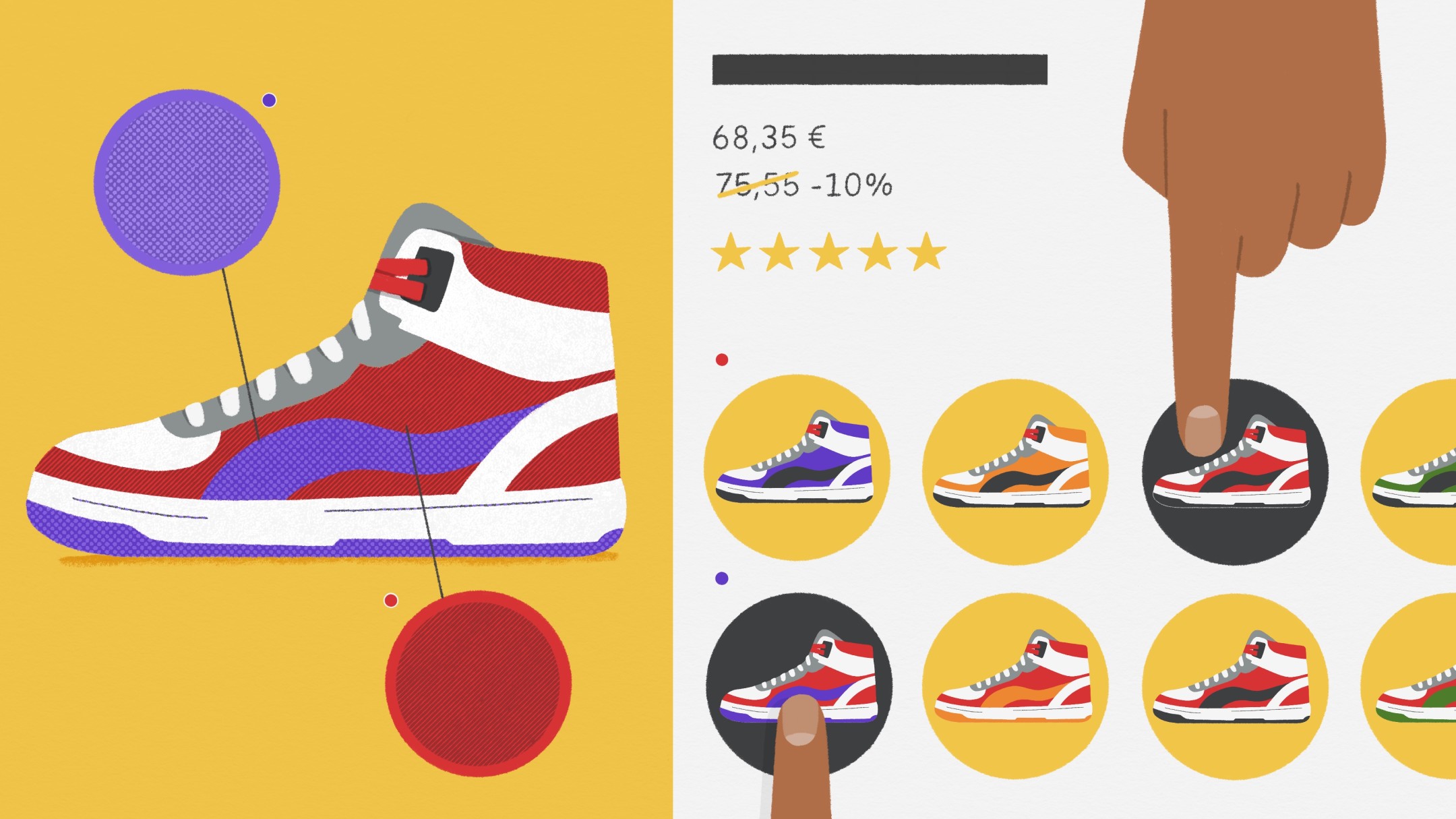Personalization is how retail brands tailor interactions and marketing campaigns to individual consumers. Get it right and your brand could win a loyal customer who feels connected to your brand.
Once a nice-to-have bonus, personalization is nowessential站在竞争日益激烈的电子商务ommerce landscape. Customer expectations around personalization are also on the rise––73% of shoppersexpect brands to understand their unique needs and expectations.
But how can you meet these ever-increasing customer demands? Brands need a solid understanding of consumer preferences and how they can personalize the full customer journey.
Here, we look at the personalization trends, statistics, and expert opinions shaping the last half of 2022 and the start of 2023.
Table of contents
- What is personalization in ecommerce?
- Why is personalization important in 2023?
- What are the benefits of personalization?
- Personalization trends to follow in 2022 and 2023
- Personalization best practices
What is personalization in ecommerce?
Personalization is when ecommerce brands tailor experiences or marketing communications to specific segments based on the information a business has on consumers.
Most of the channels that customers regularly interact with can be personalized. Some of the core channels ecommerce brands may personalize include:
- Live chat
- Websites
- Emails
- Mobile apps
- In-store interactions
- Call centers
- Social media
Depending on the brand, here’s how personalization could look in practice:
- Product recommendations:Using recent purchase history data, brands identify additional products customers may be interested in purchasing.
- Personalized rewards:Brands tailor rewards to each individual consumer’s known interests and preferences.
- Facial recognition:Physical retail stores identify customers as they walk in and alert store associates to their preferences.
- Mobile apps: Retailers personalize mobile push notifications to provide personal product recommendations.
- Subscriptions:Brands send curated personal monthly subscription packages.
Why is personalization important in 2023?
Far from an optional bonus, personalization has become a core customer expectation.Brands that don’t deliver tailored experiences to individuals risk losing out on revenue and customers.
According to McKinsey & Company,71% of consumersexpect companies to deliver personalized interactions and 76% get frustrated when this doesn’t happen.
Mckinsey’s study also found that personalization drives performance and better customer outcomes. Companies that grow faster drive 40% more of their revenue from personalization than their slower-growing counterparts.
But there’s clearly work for retailers to do––while85%的品牌believe they’re offering personalized experiences, only 60% of consumers seem to agree.
And as data privacy concerns rise, consumers are more aware of how brands use their personal information.Forty-eight percent of consumerssay they appreciate the convenience of personalization, so long as their data is secure.
In a separate report, KPMG found that40% of individualsdon’t trust companies to use their data ethically and 30% say they flat out refuse to share their data. While customers expect personalization, brands need to tread carefully around personal data.
With shoppers engaging with brands across multiple channels, effective personalization requires an omnichannel strategy that interacts with consumers where they are. Increasingly customers expect brands to understandandanticipate their needs. Plus,88% of shoppersfeel the experience a brand provides is just as important as its product.

What are the benefits of personalization?
Brands that excel at delivering personalized shopping experiences can expect loyal customers, increased revenue, and a boost to their bottom line.
Michelle Bacharach, the CEO and co-founder of AI-powered dynamic content creatorFindMineexplains that brands that tap into personalization trends can expect future success in meeting consumer needs.
“顾客favori有很高的期望te brands, and online marketplaces have never been more important,” she says. “Brands that are able to predict the desires of their online customers, and push relevant and inspirational content to them based on those desires, will see huge success in the coming years. Those who don’t will fall behind.”
Here are some of the top benefits ofecommerce personalization:
- Boost repeat purchases
- Improve brand engagement
- Drive brand loyalty
Boost repeat purchases
Personalizing shopping experiences can win customer loyalty and encourage shoppers to come back to your brand. In a recent study,49% of consumerssaid they would likely become repeat buyers if offered a personalized experience by a retail brand.
Brands that don’t personalize the shopping experience are at risk of losing customers to brands that do.Sixty-two percentsaid they not only want but expect personalization, and that a brand that doesn’t offer a personal experience could lose its business. That’s up from 45% in 2021, showing personalization is becoming a key competitive advantage for brands.
If that wasn’t enough,80% of business leaderssay customers spend 34% more (on average) when offered personalized shopping experiences.
Improve brand engagement
When brands personalize marketing efforts, they deliver relevant content to people at the right time. Instead of delivering the same campaign to their audience, marketers deliver the right message to different customer segments.
When people receive relevant messaging they’re more likely to engage with your brand. In fact, more than half(54%) of marketersworldwide reported better brand engagement because of increased personalization efforts.
In turn, the increased brand engagement results in a higher conversion rate and responses to discount offers.

AseMarketerprincipal analyst Dave Frankland points out, “Consumers don’t consider the challenges to well-executed personalization; they simply expect relevant content delivered at the right time and place.”
Drive brand loyalty
Personalization can set your brand apart from the competition. Receiving personalized communications helps customers feel special and valued by your brand. Customers often appreciate it when brands show their investment in the relationship and not just the purchase.
Thoughtful personal interactions like addressing a customer by name, suggesting relevant products, or asking them about their recent purchase all generate positive brand perceptions.
这些积极的情绪很l future purchasing decisions and encourage customers to return.
According to a recent McKinsey & Company study,76% of customerssaid that receiving personalized communications was a key factor in prompting their consideration of a brand, and 78% said such content made them more likely to repurchase.
Plus, when retail brands get it right, customers’ repeat purchases over time generate more data from which businesses can create tailored experiences.
“Personalization is especially effective at driving repeat engagement and loyalty over time. Recurring interactions create more data from which brands can design ever-more relevant experiences—creating a flywheel effect that generates strong, long-term customer lifetime value and loyalty.”
Personalization trends to follow in 2022 and 2023
Data privacy regulations,mobile commerce, and innovative technology are shifting ecommerce personalization.
Here’s how personalization trends are shaping up in the last months of 2022 and the first half of 2023:
AI-driven personalization
In 2023, more retail brands will increase their efforts to use artificial intelligence and machine learning for personalization.
A key use case of AI is providing product recommendations based on previous data. For instance, earlier this year, DTC e-grocerMisfits Marketlaunched a feature that automatically places items its algorithms predict people are likely to order in shoppers’ carts.
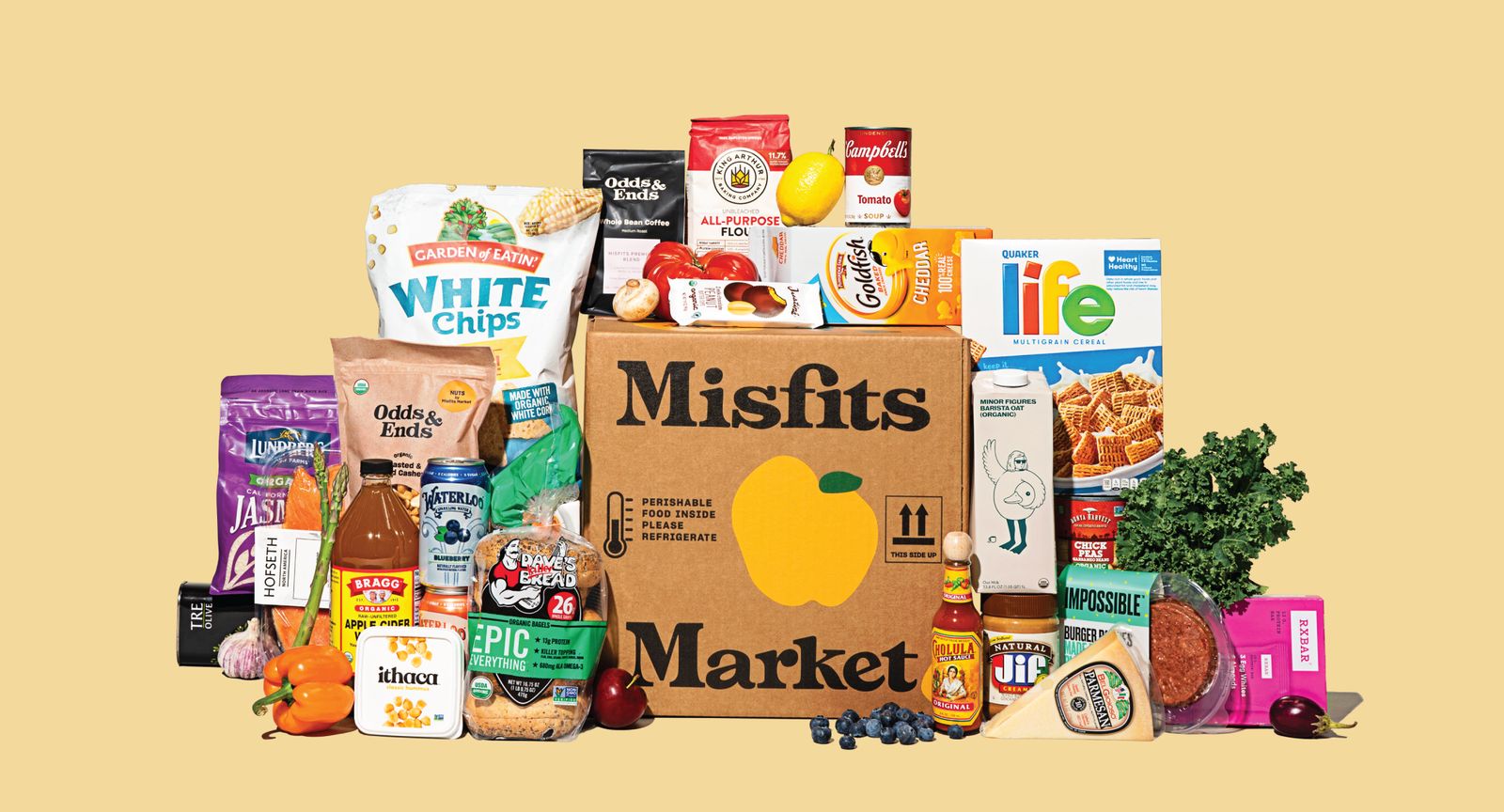
Using the “preferences” option, customers can choose whether they like or dislike the items Misfits selected for them.
In an interview withGrocery Dive, chief strategy officer Kai Selterman explained how personalizing product recommendations to the customer helps the brand save time and improve the overall shopping experience.
“We always go back to this notion that the online store should be personalized to every single customer and really show them the products they love and not waste their time with the products that they probably don’t love,” Selterman says.
The tool doesn’t just help shoppers save time––it also helps the brand increase basket sizes. The auto-cart feature chooses items for shoppers based on their previous purchases and can add “discovery” items based on product pairings and purchase history.
Selterman explains that people typically purchase 75% to 80% of the same grocery items every week. But based on purchasing data, the brand can recommend items it thinks shoppers will like.
“It’s very common that berries are bought alongside apples. If you’re someone who buys berries all of the time, but you’ve never bought an apple, we’ll recommend, ‘Hey, you might like this new apple that we have,’” says Selterman.
Customers can then choose to purchase these discovery items or leave them behind.
Privacy-conscious personalization
Brands face a cookieless reality in the near future. Apple, Firefox, and Brave already block third-party cookies. Google Chrome, representing over 60% of the search engine market share, announced in July 2021 that it willdelay third-party cookie blocking until late 2023.
Online shoppers are increasingly exercising their privacy rights too. Governments are making it easier for them to do so––Europe, the US, China, and Brazil have all recently started issuing harsh penalties to violators of data privacy laws and regulations.
A recent survey shows that28% of consumersfeel they have less control over their data than they did a year ago. People are increasingly concerned with who has their data and how they are using it.
While consumers demand personalization, it’snotat the expense of their privacy. Brands that want to get personalization right need to respect people’s desire for privacy too, otherwise they may jeopardize customer trust.
Brands are looking to first- and zero-party data to fill the gap third-party cookies will leave. So it shouldn’t come as a surprise that37% of brandsexclusively use first-party data in personalization, up from 31% in 2021.
Some first-party data collection methods include:
- Product recommendation quizzes
- Loyalty programs
- Newsletter sign-ups
- Members communities
- Branded apps
- Customer surveys
Johnnie Munger, CTO of LA-based digital product agencyWonderful, explains how the removal of third-party cookies provides an opportunity for brands to build better relationships with customers.
“Cookies were a way for brands to personalize experiences by tracking customers without them knowing,” he says. “Cookieless tracking forces transparency between brands and consumers in personalization, and offers a major opportunity to engage with customers on their terms.”
He adds that the way forward is for brands to rely on their own zero- andfirst-party datacollection methods. The key to success, he explains, is to make it easy for customers to control their experiences and not make the buyer’s journey longer or harder.
“We’re increasingly working with brands to develop features like quizzes into optional, responsive features that support the buyer journey without creating a barrier,” he says. “Quizzes shouldn’t make it harder for customers to access the products. Instead, brands should use quizzes as a resource for building more robust customer profiles and, ultimately, creating personalized experiences that customers can control.”
For example,DTCwine brandBig Hammer Winesuses a product recommendation quiz to personalize its offering and segment its audience. The brand also uses it as an opportunity to capture users’ email addresses in exchange for a $50 discount on orders over $150.
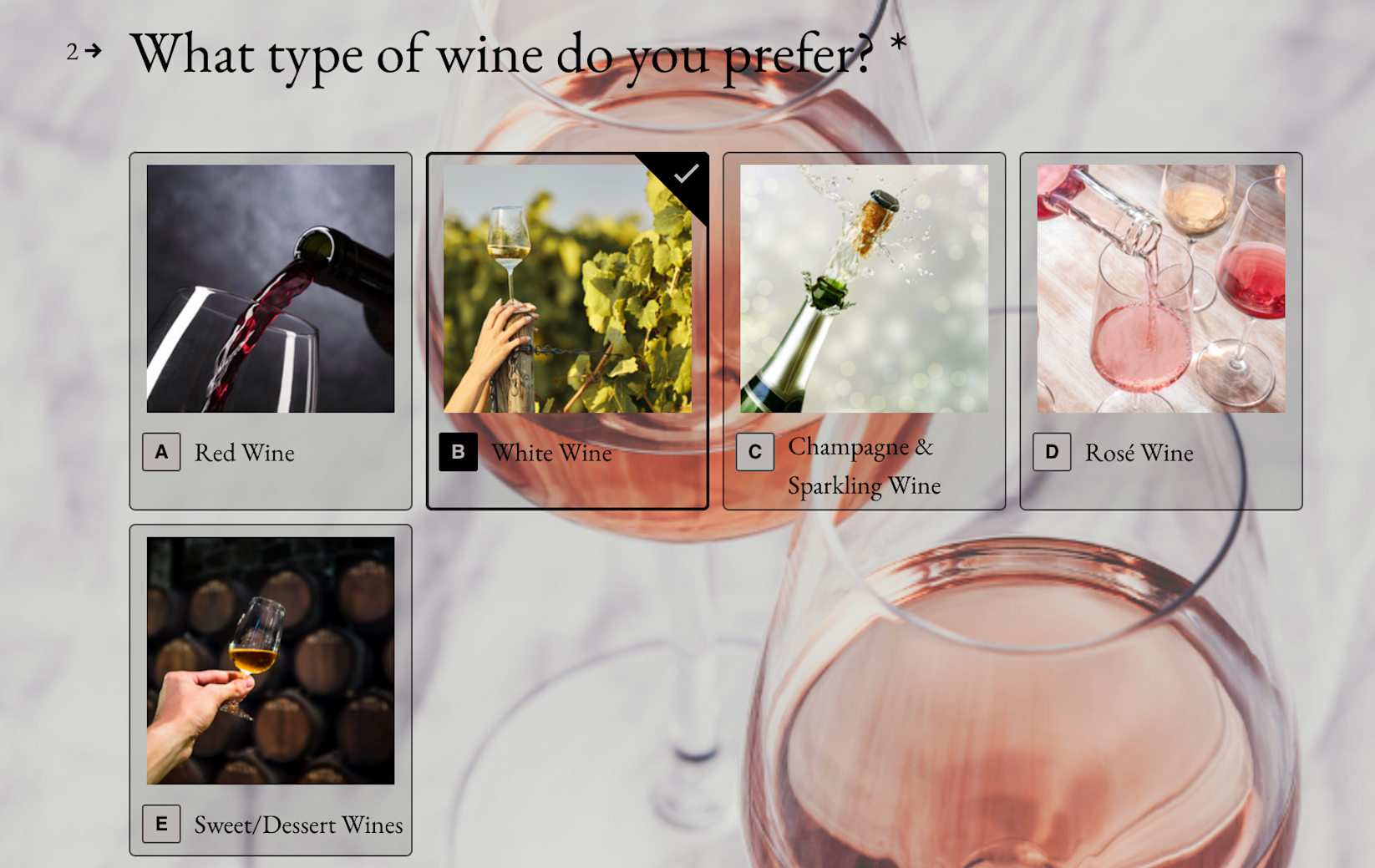
Ryan Turner, founder of email marketing agencyEcommerce Intelligence, explains that the brand can then use these quiz responses to optimize its email campaigns and better target its audience with relevant offers.
“All of their responses can then be used to deliver personalized marketing messages, particularly via email and SMS, because the segmentation opportunities are so vast,” he says.
“Using tools likeTypeFormorOctane AI, a brand can run a quiz or survey with five to 10 questions, then segment people based on their responses to send them highly personalized email or SMS campaigns. Klaviyo is great for this, as it will take data directly from your quizzes/surveys and build segments in real time.”
Personalized rewards
Personalization doesn’t need to be limited to the pre-purchase part of the customer journey––it’s just as important post-purchase.
Retailers can delight customers with personalized deals and rewards based on their recent purchase history. Rewards that are tailored to individual customers show that your brand cares and can be a big part of why they join your program and return to shop.
Currently,55% of global consumerssay that personalized rewards are why they join loyalty programs.

For example, grocery retailerKrogeruses personalized rewards as a way of encouraging consumers to shop with it instead of jumping to competing discount retailers. It provides personalized coupons for fuel or grocery items shoppers have recently purchased.
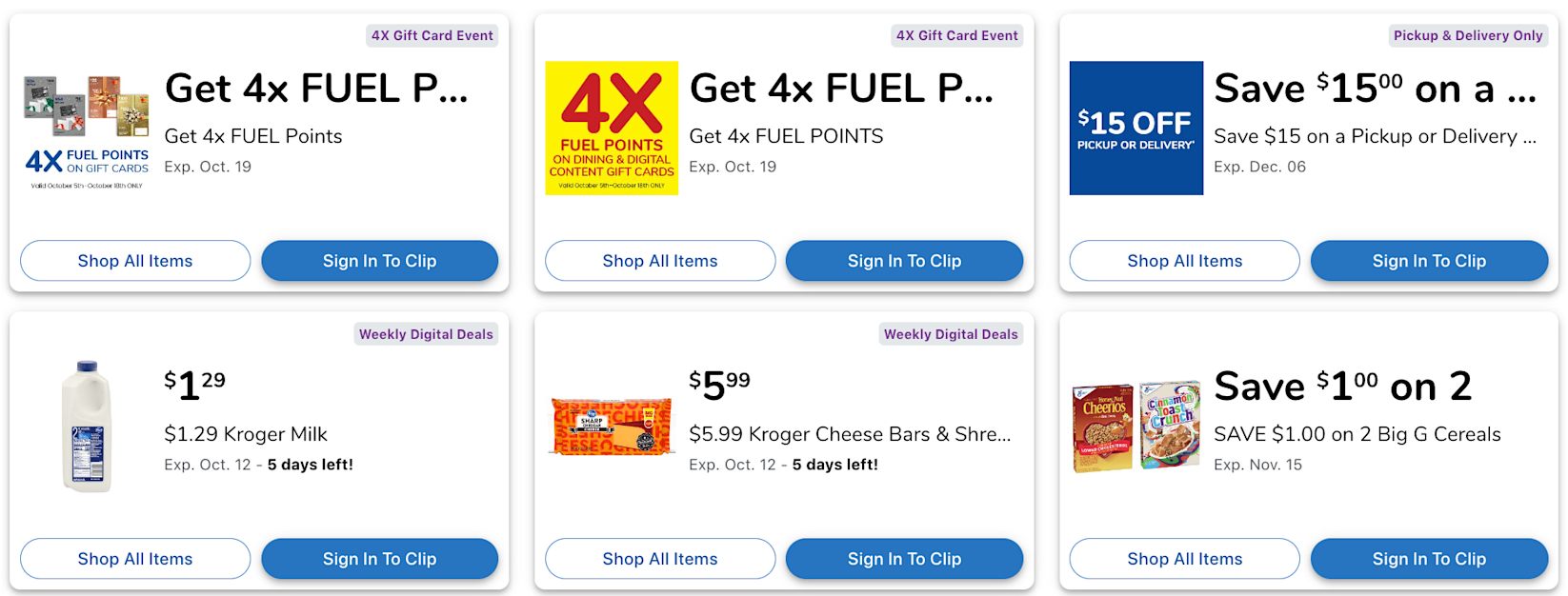
Building brand communities
When access to customer data relies so heavily on trust, it makes sense for brands to invest in customer loyalty. As brands want to improve relationships with customers, many are turning to community building. Brand communities have been increasing in popularity in the past few years, and for good reason––communities strengthen customer retentionand encourage interaction between customers and brands.
They’re a great way for brands to get to know customers on a deeper level and use these insights to inform their personalization strategy.
Turner, of Ecommerce Intelligence, explains how community building can be a cost-effective way of getting to know customers on a deeper level.
“In 2023, we’re encouraging clients to invest in building brand communities,” he says. “We've seen brand communities built on various platforms including Facebook groups and Discord, meaning they can be simple and cost effective to set up. The thing that determines whether they're effective or not is how much the brand actually engages with people on a personal level inside the closed community, so customers and prospects feel like they’re actually getting additional attention and that spending time in the community is worth it.”
Turner adds that communities work especially well for brands with niche products or items that are new to the market.
“They seem to work best in markets where there are a lot of questions around the product line or where people need to do a good amount of research. One successful example of a Facebook brand community we’ve seen is the Shopify storeFAB CBD. People have all kinds of questions they need answers to before deciding whether the products are right for them. Building an engaged branded community in a market like this is an excellent way for a retailer to set themselves apart from the competition and drive brand loyalty through a truly personalized and engaging experience.”
The FAB CBD group currently counts over 18,000 members and hosts active members-only discussions on its product lines and their benefits.
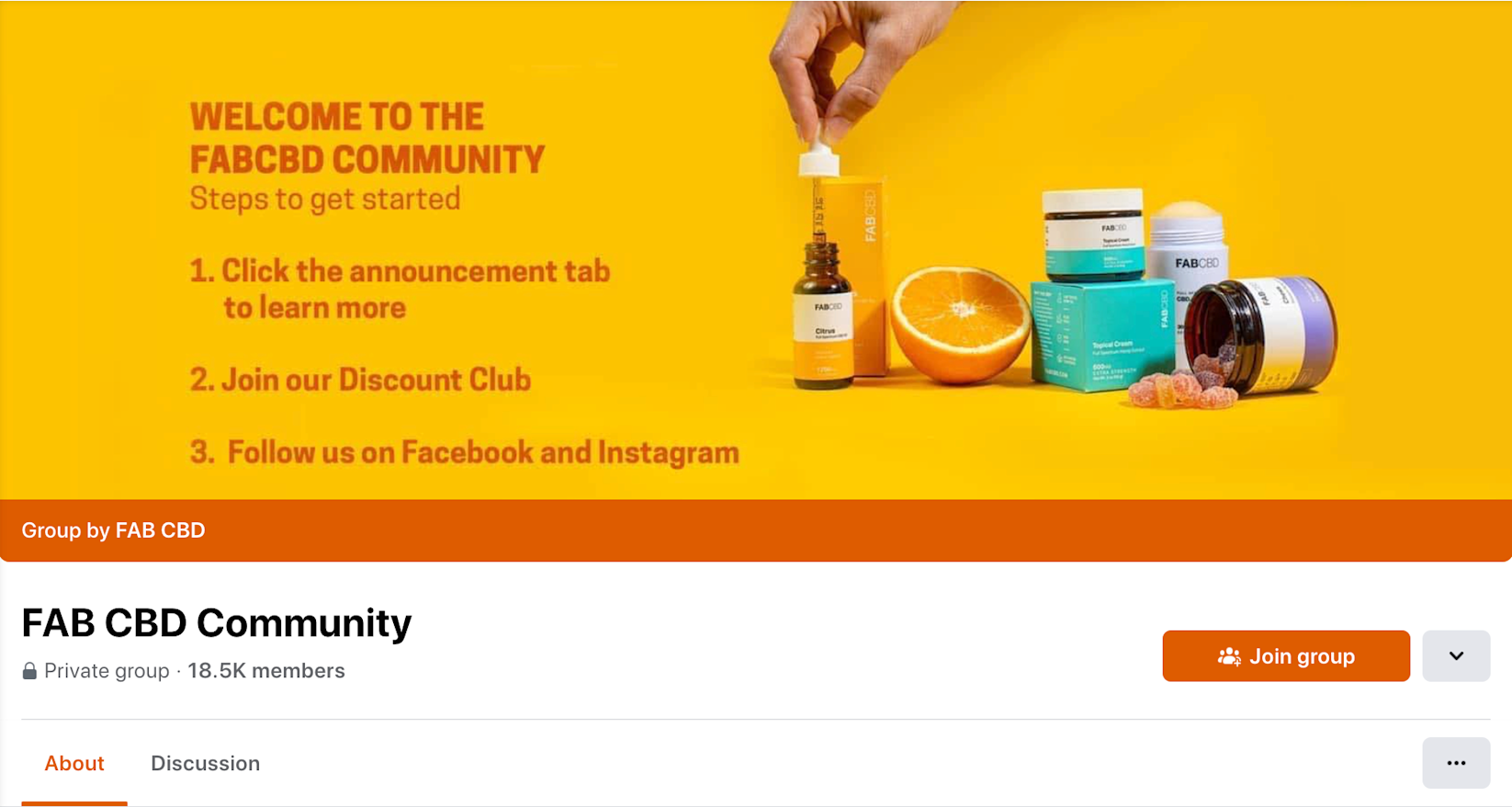
Community building also helps brands boost their bottom line––they may even find they can lower their dependence on paid advertising or something similar to drive success.
“Some brands have yet to even explore digital marketing or paid advertising because their community is so strong. They spend so much time [building] it that it drives the direct-to-consumer revenue.”
—Kimberly Smith, Founder, Marjani, and Board of Directors, National Retail Federation
More personalized mobile experiences
Global consumer mobile spending is expected to reach$728 billionby 2025. In 2023, it’s estimated that8% of all retail transactionswill take place on a mobile device. That’s predicted to exceed 10% by 2025.
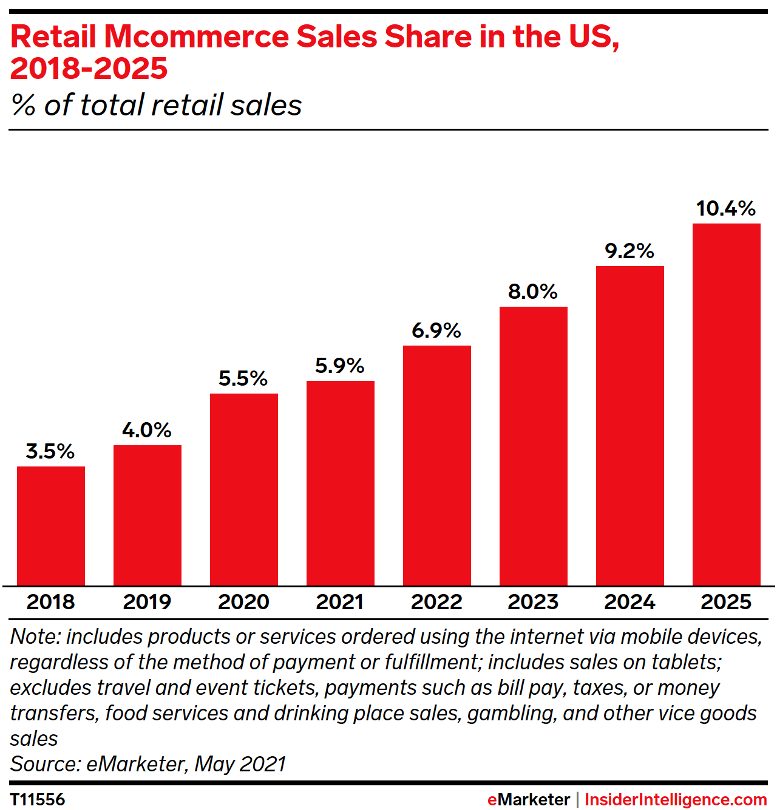
As more people shop online using their mobile devices, customers expect convenience, instant access to information, and the ability to discover new products. They also expect any mobile shopping experience they have to be relevant to them.
Brands that sell through a mobile app can use behavior analytics and customer data to send users push notifications. These pop-up notifications show on customers’ smartphones and usually announce limited-time sales, promotions, or launches. They’re designed to provide users with relevant offers and get them to spend more time shopping through the app.
Brands can also use mobile app notifications to personalize the shopping experience and make it more convenient for customers. Shoppers could receive instant messages when their items have shipped, unique discount codes, and exclusive content from loyalty programs.
Mobile push notifications don’t just enhance personalization, they can alsoincrease app engagement by up to 88%. They get disengaged users back, too, with 65% returning to an app within 30 days of the push notification.
To avoid spamming customers with notifications, offers need to be personalized and relevant to each one. Otherwise, you may run the risk of driving customers away.
Baby brandThe Honest Company有一个直观的应用客户使用订购更多products, access discounts, and get first dibs on new additions. By collecting data from the app, Honest Company can better segment its audience and further personalize marketing campaigns.
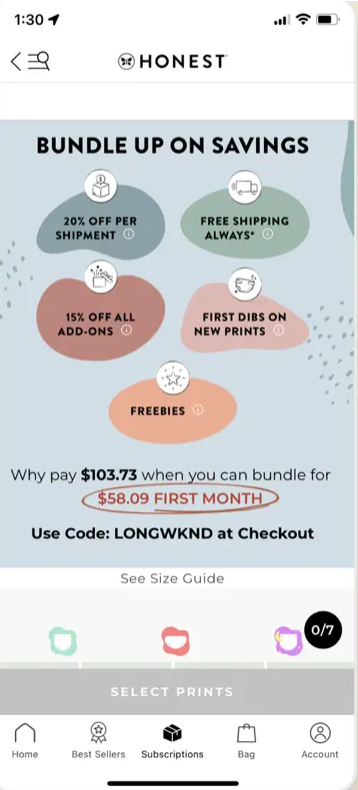
Curated subscriptions
During 2022,DTC brandshave been looking for new ways to keep subscribers interested. To avoid dreaded burnout and boredom, brands are curating their subscription programs according to customer preferences,
Ecommerce brands can personalize thecustomer experiencewith curated subscription programs. These have the added perk of providing brands with recurring revenue and improving customer loyalty––a win-win situation.
Johnnie Munger of Wonderful explains how personalizing subscription bundles is a great way of increasing customer value while reducing churn.
“Classic subscription models were generally ‘anti-personalized’—offering all customers the same recurring purchase on a rigid calendar-based schedule,” he says. “Brands are now learning to reduce customer burnout by providing more personalized subscription models.”
“Wonderful recently worked with a national beverage brand to develop a custom solution for personalized mobile-first subscription models using Shopify and Recharge. Personalized subscriptions give customers the power to make custom choices. This shift in consumer dynamics will soon become the norm in subscription-based ecommerce because it significantly reduces churn while increasing customer lifetime value.”
A recent McKinsey report found that42% of subscriberscanceled due to a lack of “new or fun items or experiences.” To combat this cancellation reason, brands could let customers personalize their subscriptions. Before signing up, brands can ask customers whether they’re looking to discover new products and experiences or whether they prefer to stick to the same items.
Even if subscribers choose the latter, retailers could still send an occasional surprise gift or recommendation to customers. Gift subscription serviceBespoke Postentices subscribers with original products and themed bundles. But they stand out for their personalized post-purchase experience that increases excitement among customers for the next delivery.
After subscribing to Bespoke Post, customers can rate potential box ideas. The brand then uses this information to inform future box contents. This approach helps keep their boxes fresh and innovative while tailored to customer preferences.

Similarly, DTC underwear brandMeUndies提供广泛的个性化将customers into recurring subscribers. Subscribers can access a selection of design themes, sizes, and styles before choosing the quantity. US-based members also get free shipping and returns.

Facial recognition technology
Brands with physical locations are using facial recognition to personalize the in-store customer experience. While not long ago the idea of facial recognition technology in retail stores sounded dystopian, the tech is now booming.
In 2021, it was valued at $4.35 billion and experts predict it will grow to$11.53 billion by 2030, growing at a CAGR of 12.62% from 2022 to 2030.
Facial recognition technology can monitor foot traffic, evaluate average shopping time, and analyze customer behaviors.
使用的技术,品牌可以获得准确的演示graphic information about customers and build better product placements. When it identifies a customer, the retailer can analyze their in-store behavior by tracking their movements.
Here are a few use cases for in-store facial recognition technology:
- Self-service shopping:Facial recognition lets brands provide a fully automated self-service experience. Shoppers simply need to approach a self-service booth and the technology will recognize their appearance and tap into any previous preferences or requests.
- Sales notices:科技通过摄像头识别顾客的脸set up at the entrance of the store and advises the store associate about the shopper’s preferences, demographic history, and purchase history. Team members can then use this data to offer personalized product recommendations.
- Impression time:Analyze customer perceptions of different products. In-store cameras can track how long shoppers spend looking at products. Retailers can analyze the data to understand whether a product is appealing or not.
- Virtual try-on:Customers can virtually try on cosmetics products or clothing.
- Automated ads:An entrance camera takes customer images and shows personalized adverts based on the user’s facial and demographic analytics. The customer can then respond to the ad and head to a row of products.
Women's apparel brandRutiuses opt-in facial recognition technology to personalize the in-store customer experience. When shoppers first walk into a Ruti store, cameras scan and take photos of their faces. Upon customer approval, the images and items related to the purchase are stored in the retailer’s customer data platform.
Using an AI-powered platform built on an internal CRM, Ruti offers personalized recommendations based on each shopper’s style preferences and size.
This data ultimately helps designers and in-store stylists identify which clothes are most likely to be flattering on shoppers.
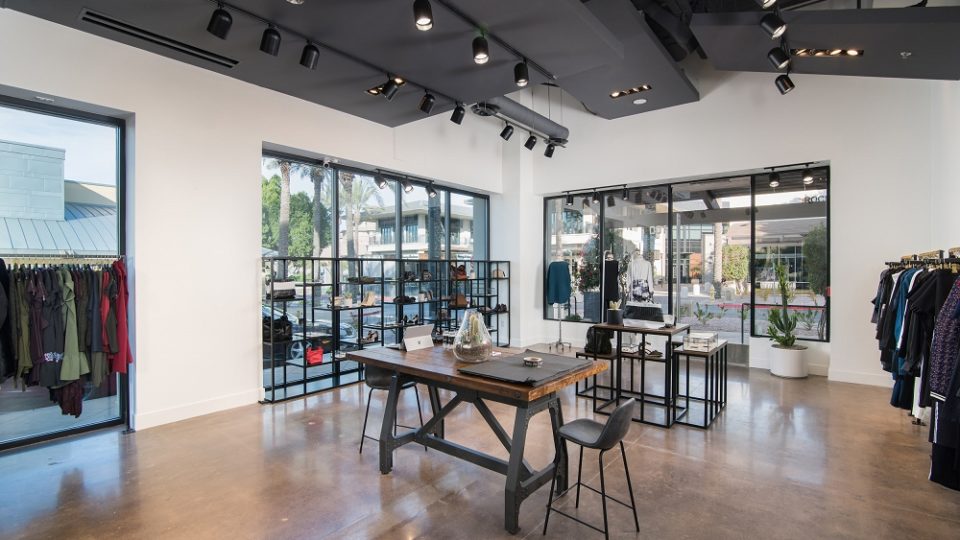
“When customers come into the store now, we can recognize them and we will have all this information that tells us this customer, for example, hates fitted tops or clothing—she just likes everything loose,” says Ruti founder Ruti Zisser in an interview withRetail TouchPoints.
“She loves to buy more colorful apparel, or even wants to gain approval from a friend due to her styling choice. We look for any information that can make the customer feel more comfortable about their purchase. It just makes the lives of everyone that works for Ruti much easier, and customers feel much better,” says Zisser.
Personalization best practices
Successfully implementing personalization hinges on prioritizing your customer base. Anytime you request customer data or personalize messaging, people need to understand the reason and value behind your request. If you can show customers that their personal data helps you provide a seamless experience they’ll be more likely to consider engaging with your brand.
Consider these three points before you get started with personalized marketing strategies:
Be personal without being creepy
As consumers become increasingly aware of their privacy rights, it’s important that brands respect customer preferences along with global restrictions.
While shoppers expect personalization, they don’t want it at the expense of their privacy. Whether you’re using facial recognition technology, loyalty programs, or AI-driven product recommendations, you need to get customer consent first.
According to our research, customers are increasingly concerned about how brands use their personal information. Most consumers won’t share their data if they feel it’s unnecessary.
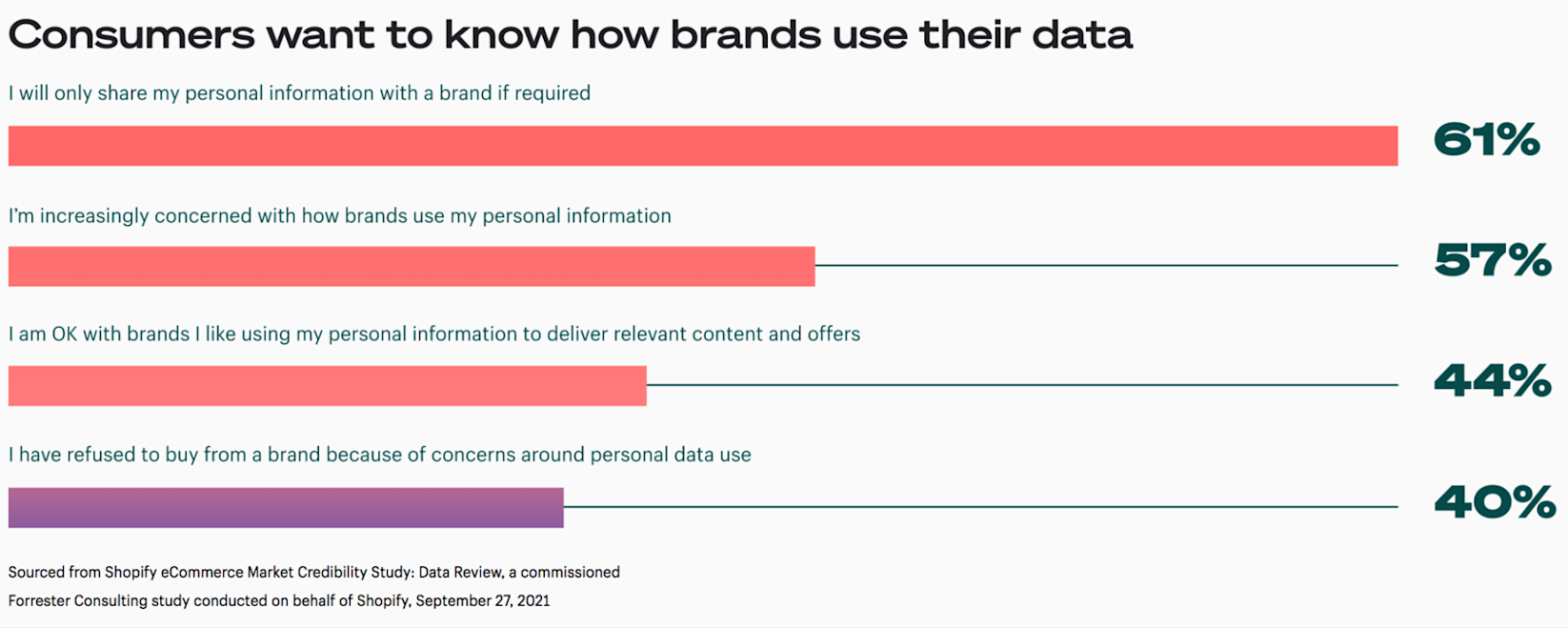
Consumers areover three times more likelyto abandon brands that “over-personalize,” compared to brands that fail to personalize enough. Including too much personal data in customized communication can make consumers feel stalked by brands.
Brands must walk a fine line between personalizing content and going overboard. Doing the latter can drive consumers away to competing brands. Any personalization methods you choose to implement should be opt-in to allow customers the chance to say no.
Brands need to build consumer trust first
Before personalizing all messaging, brands should focus on building customer trust. Sometimes personalization is best left to post-purchase or at least once you have a relationship with customers.
When consumers feel they can trust brands, they’ll be more likely to lean into sharing their data. Brands can build trust by providing a top-tier user experience and reliable support that’s available when customers need it.
Protect customer data
When you collect and store customer data, it’s vital to follow solid data privacy policies. Customers want to know how brands use their personal data and if they’re using it responsibly.
As privacy concerns grow, reassure your customers that your brand is taking a safe and responsible approach to managing their data. Ask customers to opt-in to personalization campaigns and make sure they consent to their personal data being used by your company.
According to research done byAdobe, using data disrespecting consumers’ data preferences will cause 68% of customers to stop purchasing.
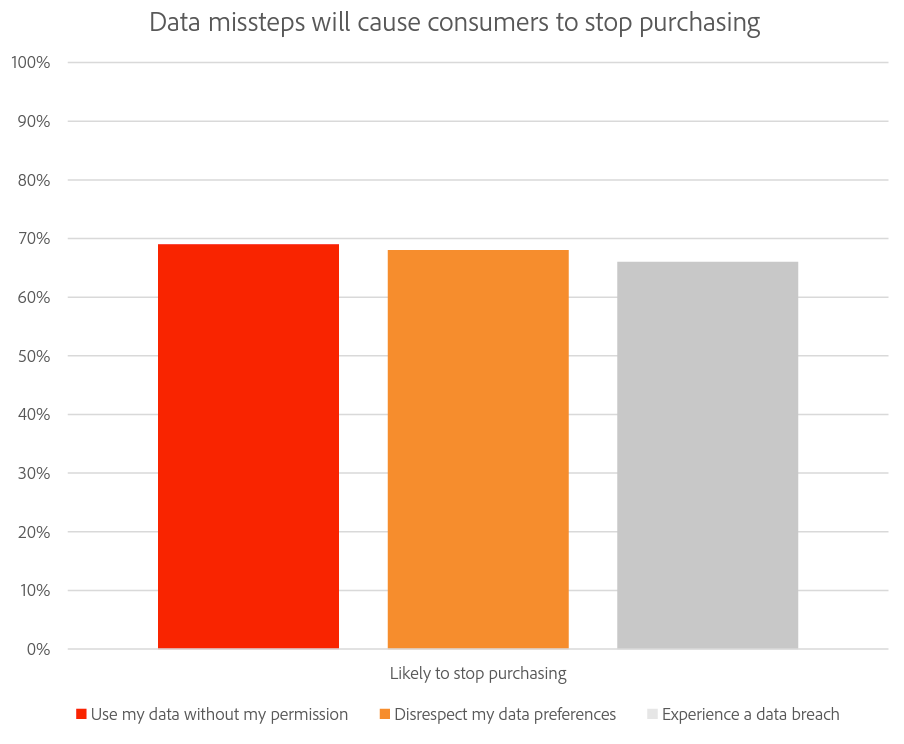
Using data without customer permission can land your business in hot water with the law and also cause customers to stop purchasing––both are detrimental to any brand’s reputation and customer relationships.
Remember to only collect the customer data you need and provide consumers with a copy of your business’s data privacy policy. Make it easy for customers to opt out of personalization at any point. When customers feel confident your business takes a responsible approach to their data, they’ll be more likely to share personal information and opt-in for personalized messaging.
Deliver outstanding customer experiences and tap into personalization trends in 2023
These personalization trends show that customer expectations are only set to grow in 2023. As shoppers continue to want the best of physical and online retail, brands will need to find new ways of personalizing in-person and digital experiences.
To capture shoppers’ attention in an increasingly crowded ecommerce space, brands need to tap into these trends. Find what level of personalization your audience is comfortable with and then build a strategy to interact with them at all stages of the customer journey.
Personalization FAQ
What is personalization in ecommerce?
Personalization means tailoring experiences or marketing communications to specific customer segments based on the information a business has on its audience.
Why is personalization important?
Personalization promotes long-term customer relationships. It’s an effective way of encouraging repeat customer loyalty and engagement. Personalized interactions also generate more customer data that brands can use to develop even more targeted experiences.
What are the benefits of personalization?
The core benefits of personalization include:
- Increases in repeat purchases
- Improves brand recognition
- Drives brand loyalty
